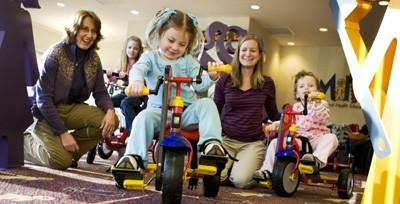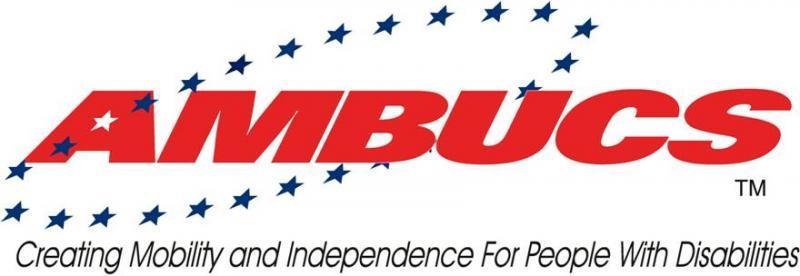 Do you ever have that moment of envy, when you are stuck in traffic, looking out the window at a happy-go-lucky cyclist just flying past everyone in the cycling lane? For some, that feeling of watching a happy cyclist may have a different meaning if they never learned how to ride a bike, or were not able to due to a disability.
Do you ever have that moment of envy, when you are stuck in traffic, looking out the window at a happy-go-lucky cyclist just flying past everyone in the cycling lane? For some, that feeling of watching a happy cyclist may have a different meaning if they never learned how to ride a bike, or were not able to due to a disability.
What is it about riding a bike that seems like such an essential part of life, and most especially – childhood? Most of us can all reach into the recesses of our adult minds and remember that defining moment that the training wheels came off – and we learned to sail off down the sidewalk on our own (like many, there were probably some bumps, bruises, and bandaids involved). In what is one of the greatest symbols of independence for children, riding a bike offers freedom. It gives one the chance to enjoy fresh air, check out nature—and sometimes, it’s just a way to get where you need to go, powered by your own energy.
 The University of North Georgia realizes what a positive impact getting outside and onto a bike can have for everyone, but they are now focused on helping disabled children in therapy to have the opportunity, thanks to AMBUCS, a non-profit program which manufactures and distributes a line of tricycles called AmTrykes--geared toward children and adults with special needs.
The University of North Georgia realizes what a positive impact getting outside and onto a bike can have for everyone, but they are now focused on helping disabled children in therapy to have the opportunity, thanks to AMBUCS, a non-profit program which manufactures and distributes a line of tricycles called AmTrykes--geared toward children and adults with special needs.
The university’s departments of physical therapy and visual arts is coordinating with AMBUCS for hospital use of the tricycles that are adaptive, and can also be used to help adults with disabilities have the opportunity to enjoy cycling. They are helpful with patient therapy, as well as building confidence and offering a great way to get exercise.
“If you think about it, what does a bike mean when you’re a kid?” said Joe Copeland, executive director for national AMBUCS. “It’s a huge step. It’s an independence thing. It’s about being like other kids, having the wind in your hair, sensory things coming together.”
The program got off to a very positive start when the AMBUCS group actually reached out to University of North Georgia physical therapy professor Dr. Terrie Millard. Word of her involvement with 3D printing technology had spread, and the AMBUCS team thought that 3D printing would work well with their affordable, customized trike designs.
“What’s happened is that some parents are going to set the community up and be involved with the community to raise funds for those who want access,” said Dr. Stephanie Palma, director of academic services and physical therapy professor. “We’ll do the fittings and any therapist that comes here or gets trained by us, we’ll teach them how to do it and fit a child.”
 The adaptive tricycles offer a fun respite, as well as an emotional boost.
The adaptive tricycles offer a fun respite, as well as an emotional boost.
“The bike gives them a sense of freedom that they haven’t experienced,” she said. “And it’s such good cardiopulmonary (exercise), whether they’re doing the hands or the legs, whichever bike we fit them with.”
While there is a focus on children, the AMBUCS team has fitted individuals of all ages and sizes for trikes, with the youngest being 20 months. They can accommodate a height of 6’4 and up to 200 pounds. The AMBUCS team has been meeting recently with physical therapy students so they can become familiar with the AmTrykes, which are offered in two dozen types of different models.
AMBUCS, the visual arts department, and physical therapy department will all meet and coordinate to work on 3D printed parts that can be adaptive and fitted for AmTrykes. Currently, the trikes offer both hand and pedal steering, or come with the pedal only steering. They offer joint hand steering and a list of other options, as well as many specialized safety options like headrests and wider foot pedals.
The cost for most AmTrykes is fairly affordable at $300-600, rather than the more typical price of $2,000 for a customized trike. With the element of digital design and 3D printing added to it, the bottom line always has the ability to become more affordable as well—not to mention making customization easier and faster.
All involved are thrilled to be able to put both kids and disabled adults on the trikes.
“Just to see the smile on their face,” said Palma. “It just makes you say, ‘We nailed it today.’”
Have you seen an AmTryke before? Do you know of a disabled child or adult who would enjoy the customized aspects of one of these trikes? Share with us in the AmTryke & 3D Printing at University of Georgia forum over at 3DPB.com.
Subscribe to Our Email Newsletter
Stay up-to-date on all the latest news from the 3D printing industry and receive information and offers from third party vendors.
You May Also Like
Printing Money Episode 17: Recent 3D Printing Deals, with Alex Kingsbury
Printing Money is back with Episode 17! Our host, NewCap Partners‘ Danny Piper, is joined by Alex Kingsbury for this episode, so you can prepare yourself for smart coverage laced...
Insights from Cantor Fitzgerald on AM’s Q1 2024 Landscape
A recent survey by Cantor Fitzgerald sheds light on the persistent challenges within the additive manufacturing (AM) industry in the first quarter of 2024. Based on responses from 38 industry...
3D Printing Financials: Xometry’s Scaling up and Strong Start to 2024
Xometry (Nasdaq: XMTR) kicked off 2024 with strong results, boosting its marketplace and technology to new heights. Both revenue and gross margin soared, fueled by an expanding global network of...
3D Printing Financials: Desktop Metal Targets Recovery Amid Net Losses and Revenue Downturn
Despite facing a decline in revenue and the persistent challenges of a tight economic climate, Desktop Metal (NYSE: DM) is making strides toward operational efficiency. The first quarter of 2024...

































